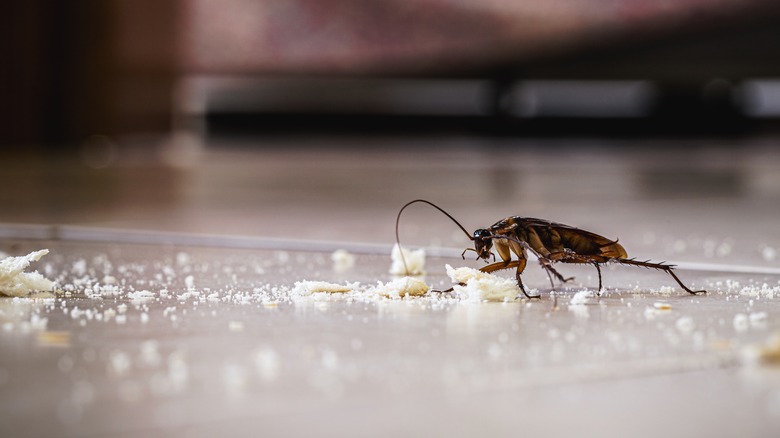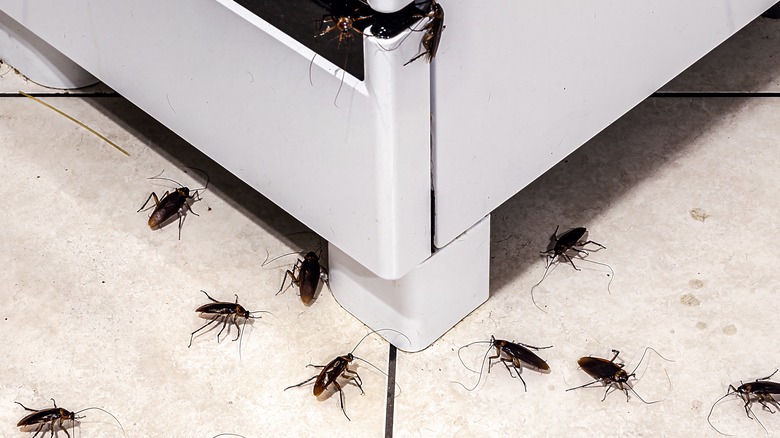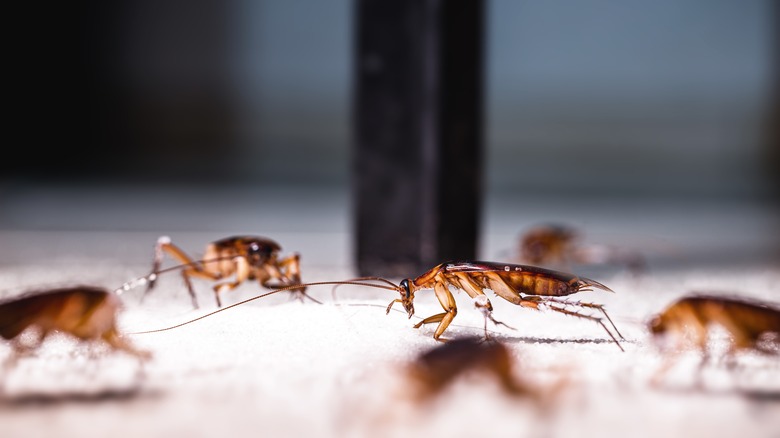You Might Have A Cockroach Problem If Your Home Starts Smelling Like This
No one likes to learn that they have a cockroach problem. These creepy crawlies enter your home looking for food and shelter, often gravitating towards damp areas like the bathroom, or places with loads of crumbs, like the kitchen. If you suspect that you have an infestation, it's important to know for sure because roaches can carry some serious health risks. According to the National Center for Healthy Housing, their droppings, saliva, and skin can trigger asthma attacks, and they're also known to spread harmful bacteria as they scurry throughout the house. However, one surefire way to see if you have a problem is by registering a new, unexpected smell in your home. According to our pest control expert, your home will begin to take on a distinctly oily smell.
"An oily, musty smell can be an indication of a cockroach infestation," Danielle Restuccia, the division technical services manager of the northeast division at Orkin, exclusively tells House Digest. "Some cockroach species emit unpleasant smells, and in the event of a serious infestation, a strong oily or musty odor may be present." This smell is created for many reasons, from the chemicals they release to the scent of their carcasses. Here is a closer look into why.
Why a cockroach infestation emits an oily smell
You will begin to notice an oily smell in your home if you have a cockroach infestation for several reasons. The first has to do with pheromones, which help the roaches signal to each other and navigate around their new environment. "Cockroaches release pheromones to communicate with each other, which can produce chemical odors in their feces and on their bodies," Restuccia exclusively tells House Digest. If you notice droppings in the room, you will likely be hit with a musty smell as well. But it's not just the feces you have to watch out for. It's also their secretions. "Cockroaches secrete various bodily fluids and oils, which can add to the oily smell associated with their presence," Restuccia explains.
But it's not just the living roaches that contribute to the changing smell in your home. It's also the dead ones. "Cockroaches decompose and release a foul smell when they die. As the infestation grows, more dead bodies accumulate, intensifying the odor," she explains. When all these factors combine, they create a sour, musty smell. However, if you're still unsure if it's because of an infestation, there are other signs to look out for.
Other signs in addition to odor
In addition to a mildewy, oily odor, there are other signs you should look out for to confirm you have an infestation. The first thing to keep an eye out for is droppings. "Small roaches produce feces that resemble coffee grounds or black pepper, while larger roaches expel cylindrical droppings," Restuccia exclusively tells House Digest. "The quantity of visible feces is oftentimes a good indicator of the level or duration of infestation." You should also look for smears, which are brownish streaks they leave behind while walking. "They're very difficult to clean and might be easily confused with food stains. In a way, they kind of are food stains, but that food passed through a cockroach first," she explains. If you notice brown stains around the house that take some muscle power to clear, it might be time to call an exterminator. Couple that with any shed skin or egg sacks in the near vicinity, and you have all the signs you need.
While you might be tempted to try some DIY remedies to get rid of unwanted roaches, it's more beneficial to call an exterminator right away. That's because cockroaches are proficient at hiding, proliferate quickly, and are frustratingly resistant to lots of treatments. "Identifying the specific cockroach species is crucial, as different species require different strategies for effective control," Restuccia explains. "For successful cockroach management, a trained pest professional should be called in to assess the problem and identify the correct treatments and treatment areas."


